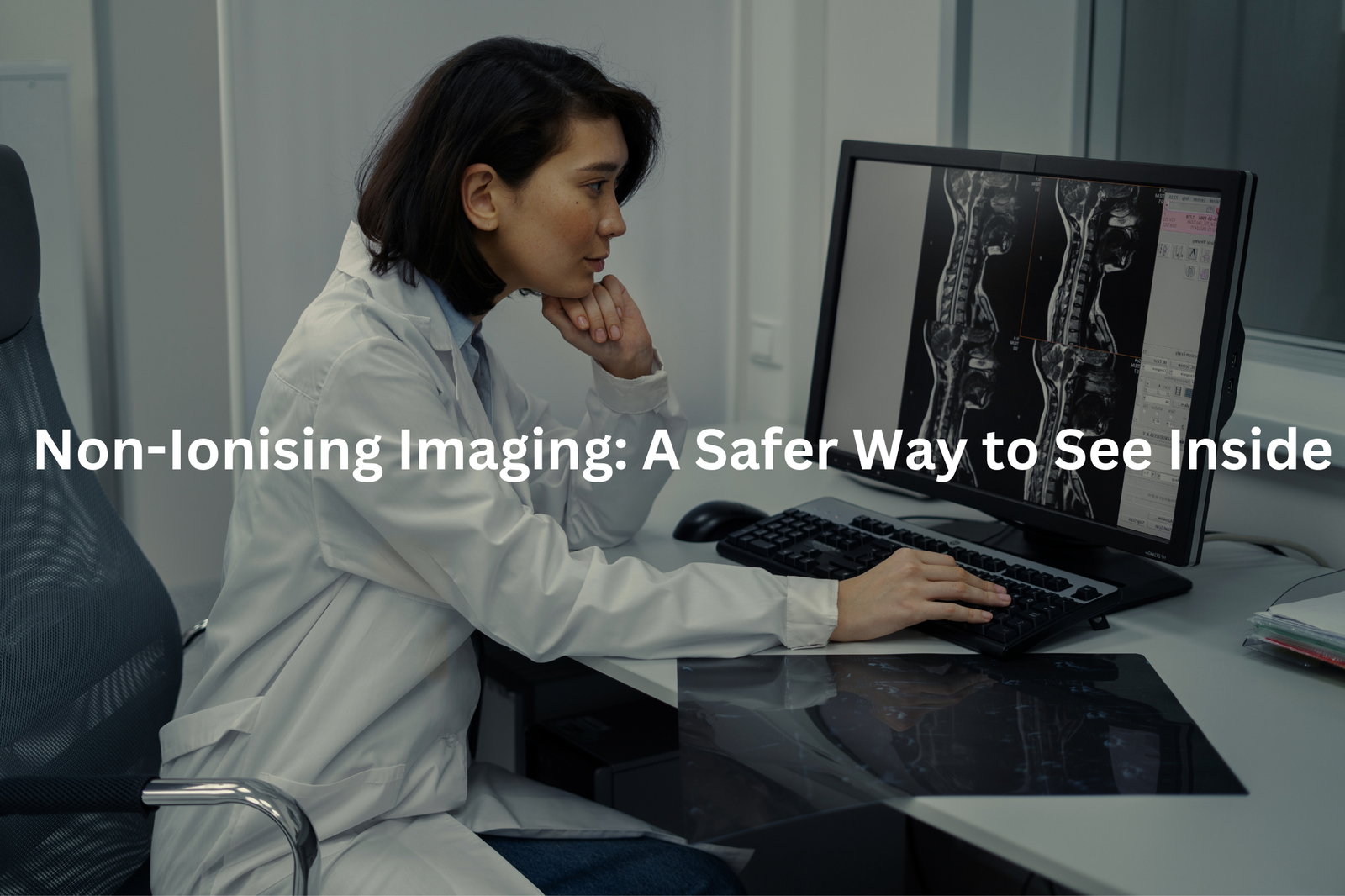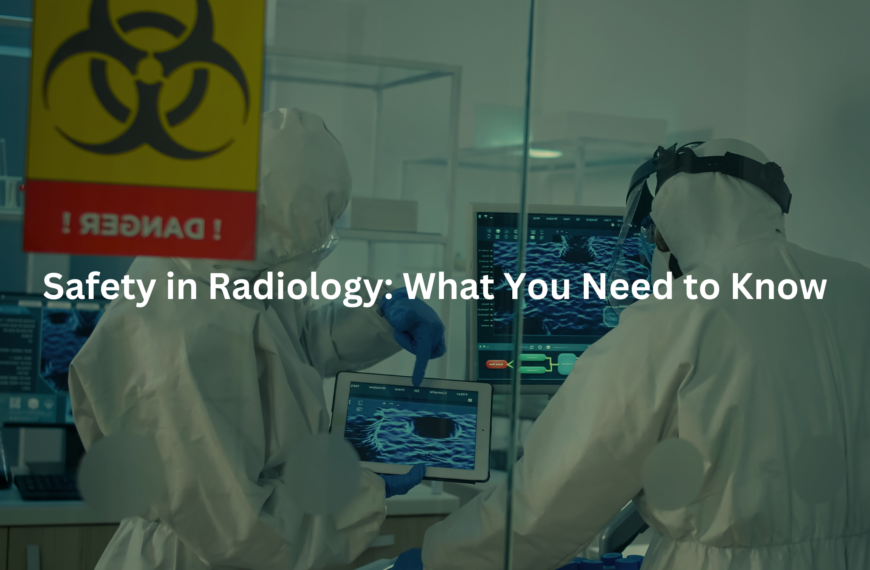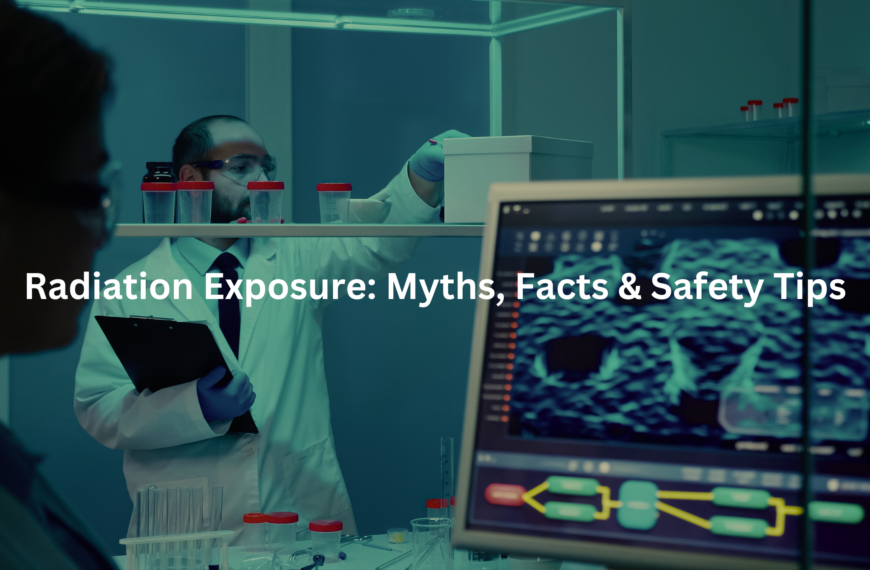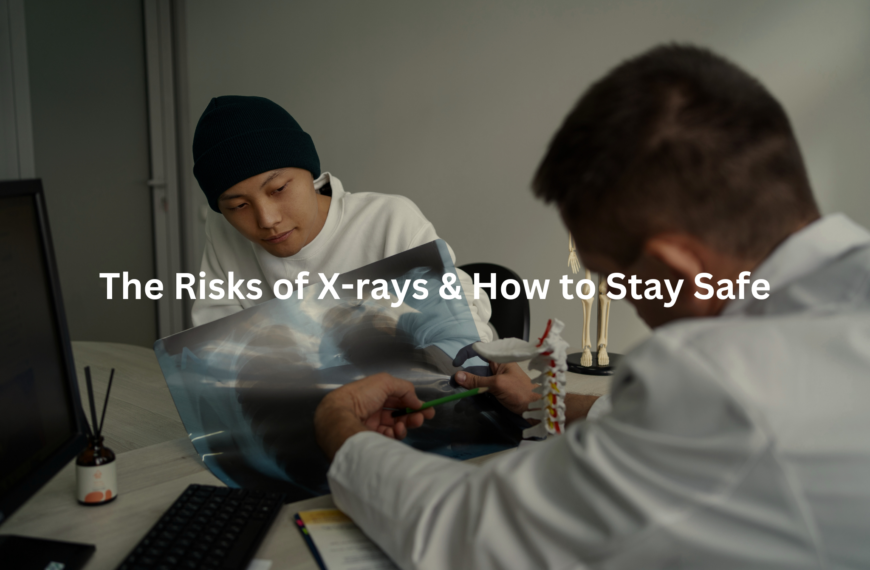Non-ionising imaging lets doctors see inside without harmful radiation—safer for kids, pregnancy, and soft tissues. Learn how it works.
Non-ionising imaging creates safe views inside the human body without using harmful radiation. Unlike x-rays and gamma rays, these methods work well for children and pregnant women. The process uses gentle techniques like ultrasound, which shows moving pictures of soft tissues and blood flow, and magnetic resonance imaging (MRI), which creates detailed cross-sections of organs.
Doctors rely on these safe methods to check babies during pregnancy, examine muscles and joints, and spot potential health issues. The clear, detailed images help medical teams make accurate diagnoses and track treatment progress. If you want to learn more about how these methods work and how they benefit us, keep reading!
Key Takeaway
- Non-ionising imaging uses sound waves or magnetic fields, not harmful radiation.
- It is safer for special groups like children and pregnant women.
- Techniques like ultrasound and MRI help doctors see inside our bodies with less risk.
What Is Non-Ionising Imaging?
MRI machines stand as modern marvels in medical imaging, with their massive frames and distinctive hums filling hospital rooms across Australia. Unlike X-rays and CT scans that use ionising radiation, MRI scanners create detailed body images using magnetic fields and radio waves.
Non-ionising imaging methods include(1):
• MRI (Magnetic Resonance Imaging): Creates detailed pictures of soft tissues, joints, and organs
• Ultrasound: Uses sound waves to view internal structures
• Optical Imaging: Employs light to examine tissue changes
These safer scanning options prove particularly valuable for certain groups (pregnant women, children, and patients needing regular monitoring). The absence of radiation exposure makes them suitable for repeated use without harmful effects.
While CT scans remain crucial for emergency situations, offering quick results and clear bone detail, non-ionising options might work better for routine checkups. Medical professionals can guide patients toward the most appropriate imaging method based on specific needs and circumstances.
Patients should discuss available options with their healthcare providers to determine the most suitable approach for their situation.
How Do Non-Ionising Imaging Techniques Work?
Sources: What’s Occ Doc?
Non-ionising imaging helps doctors look inside the body without harmful radiation, making it safer for patients who need regular check-ups, kids, and pregnant women.
Three main types of non-ionising imaging exist in modern medicine:
Ultrasound scanning uses high-frequency sound waves (between 2-18 MHz) to create images. A small probe sends sound pulses that bounce back, showing organs, blood vessels, and developing babies.
MRI machines use powerful magnets (typically 1.5 to 3 tesla) and radio waves to make detailed pictures of soft tissue. The process takes 20-60 minutes, perfect for examining brains, muscles, and spinal problems.
Optical imaging, a newer method, uses light waves to spot tissue changes. This technique measures how different tissues absorb and scatter light, helping find early signs of disease.
Each method serves different medical needs. Doctors pick the best option based on what they need to see and the patient’s situation. Sometimes, combining methods gives the most accurate diagnosis.
Why Is Non-Ionising Imaging Important?
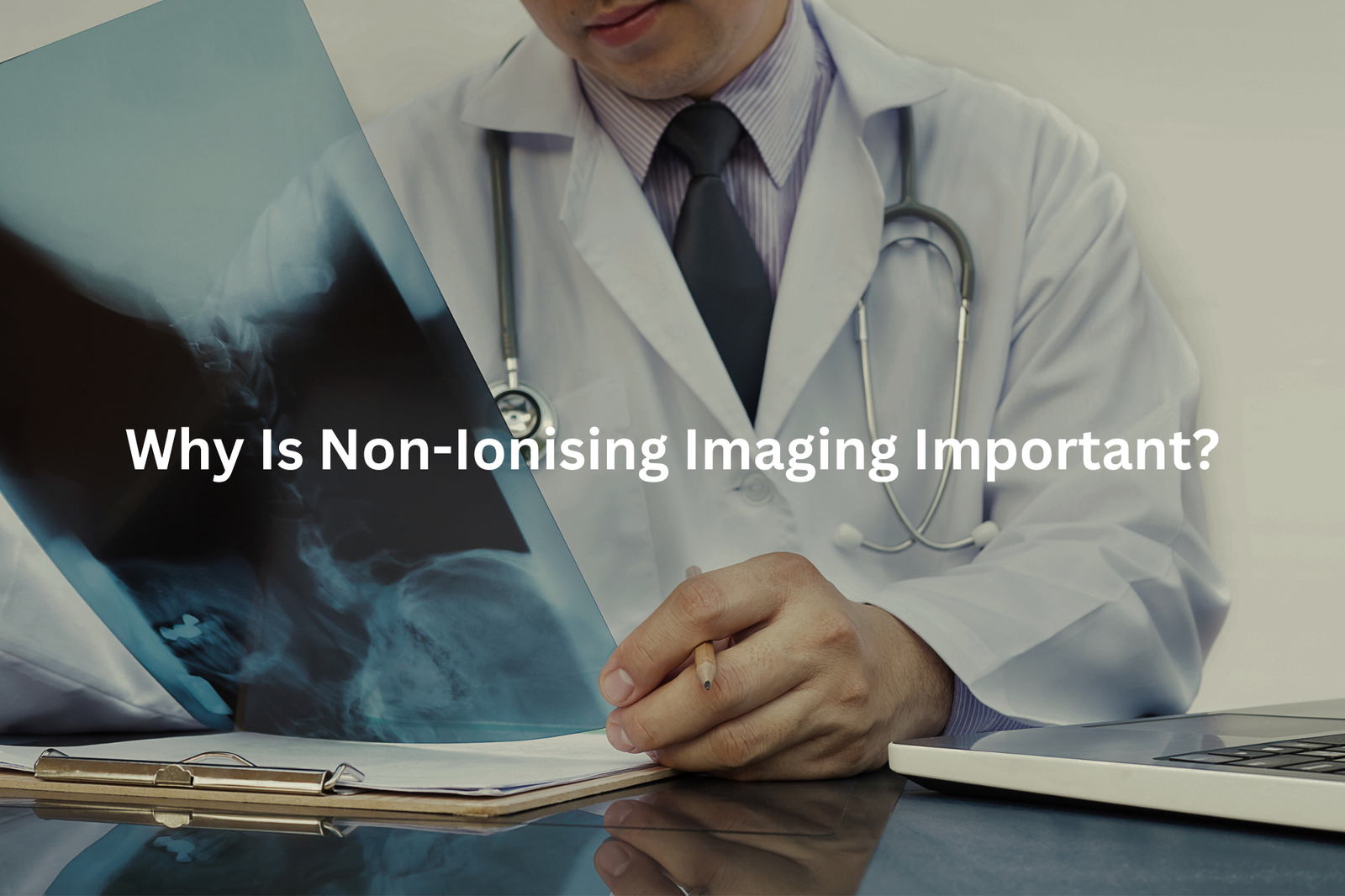
Medical imaging choices fill modern hospitals. Patients often face decisions between X-rays, which use ionising radiation, and safer alternatives like ultrasound that don’t. The difference matters.
Non-ionising scans (MRI, ultrasound, optical imaging) work without radiation exposure. This makes them particularly good for pregnant women and children, whose cells show more sensitivity to radiation effects.
These safer options still produce detailed images:
- Ultrasound shows real-time movement
- MRI captures detailed soft tissue views
- Optical imaging reveals surface problems
ARPANSA, Australia’s radiation safety agency, monitors medical imaging standards closely. They work with international guidelines (set by ICNIRP) that confirm the safety of non-ionising methods when used properly.
Doctors can often achieve accurate diagnoses without radiation. A quick ultrasound might spot the problem in minutes, while an MRI provides deeper detail for complex cases. Each patient deserves to know their options.
Who Should Use Non-Ionising Imaging?
Non-ionising medical imaging offers safer options for several patient groups(2). These methods, which don’t use radiation, suit specific medical needs perfectly.
Children need extra protection during medical scans. Their growing bodies and rapidly dividing cells make them more sensitive to radiation exposure. Ultrasound and MRI scans provide clear images without these risks.
For expectant mothers, ultrasound (using harmless sound waves) remains the primary choice for monitoring foetal development. MRI scans serve as a backup when more detailed images are needed.
Patients with ongoing conditions often require multiple scans. Someone with inflammatory bowel disease might need regular monitoring, while a heart patient requires frequent arterial checks. Non-ionising methods let doctors track these conditions without cumulative radiation exposure.
Medical professionals consider several factors when choosing imaging types:
- Patient age and condition
- Required image detail
- Frequency of scanning needed
- Available alternatives
Sometimes X-rays or CT scans become necessary, but non-ionising options often work just as effectively.
What Are the Risks of Non-Ionising Imaging?
Medical imaging safety requires a balanced look at the facts (even the less comfortable ones). Non-ionising scans, while safer than x-rays, come with their own set of considerations that need attention.
The effects of long-term exposure to ultrasound and MRI remain partly unknown, particularly during pregnancy. Current guidelines suggest limiting routine scans to what’s medically needed – typically two to three during normal pregnancies.
MRI contrast agents (specifically gadolinium-based ones) clear from most patients’ bodies within 24 hours. Yet in some cases, these compounds stick around longer than expected. The body temperature might rise slightly during an MRI scan due to radiofrequency energy, usually by less than 1°C.
Medical professionals assess these factors against each patient’s needs. They consider:
- Current health status
- Medical history
- Presence of metal implants
- Specific diagnostic requirements
Patients should feel free to discuss concerns with their healthcare providers about imaging procedures.
Why Should You Choose Non-Ionising Imaging?

Medical imaging choices don’t need to be complex. Non-ionising methods offer clear benefits for most patients (those needing routine scans or check-ups).
The main advantage sits with safety. Unlike X-rays and CT scans that use ionising radiation, non-ionising options like ultrasound and MRI don’t carry DNA damage risks. This makes them particularly suitable for pregnant women, children, and patients needing frequent scans.
These safer methods deliver excellent results. MRI creates detailed pictures of soft tissues, showing muscles, nerves, and brain matter with remarkable clarity. Ultrasound provides live views of moving parts – blood flowing through vessels or a foetal heartbeat in real-time.
Sometimes, ionising scans become necessary. CT scans work faster than MRI, and X-rays show bone breaks more clearly. Medical professionals consider each case carefully, weighing risks against benefits. Patients should feel free to discuss imaging options with their healthcare provider.
What to Expect During a Non-Ionising Imaging Procedure
Medical scans can feel overwhelming, but knowing what happens makes them easier to handle. Non-ionising scans like ultrasounds and MRIs are common procedures in Australian hospitals(3).
Before any scan, patients receive specific instructions. For ultrasounds of the belly (about 20-30 minutes long), fasting might be needed. MRI preparation requires removing all metal objects – rings, earrings, and even clothes with zippers.
During an ultrasound, the sonographer applies a cold gel and glides a small probe across the skin. MRI scans take longer (30-60 minutes) and involve lying still in a large tube while the machine makes loud noises.
These scans don’t leave any radiation in the body, and patients can resume normal activities straight away. Results typically take 24-48 hours, depending on the hospital’s workload.
Patients should always ask questions if something isn’t clear – medical staff are there to explain the process and put minds at ease.
FAQ
What is a CT scan and how does it work?
A CT (computed tomography) scan is a non-invasive imaging test that uses x-ray beams to create detailed pictures of the body’s internal structures. It captures multiple x-ray images from different angles and combines them to generate a 3D image. CT scans are useful for examining everything from bones to organs and can often provide more information than regular x-rays.
What are the benefits of low-dose CT scans?
Low-dose CT scans use a lower amount of radiation compared to standard CT scans, making them safer for patients. This is especially important for those who need multiple scans or regular monitoring, such as cancer patients. Low-dose scans can still provide high-quality images, allowing doctors to make accurate diagnoses while minimising radiation exposure and cancer risk.
How do real-time imaging techniques work?
Real-time imaging techniques, like ultrasound and fluoroscopy, allow doctors to see internal structures in the body as they are happening. This is useful for procedures where the physician needs to guide instruments or monitor changes in real time. These imaging methods use non-ionising radiation, like sound waves or low-dose x-rays, to create images without exposing the patient to high levels of radiation.
What are the differences between CT and MRI scans?
CT scans and MRI (magnetic resonance imaging) scans are both important medical imaging tools, but they use different technologies. CT scans use x-ray beams, while MRI uses strong magnetic fields and radio waves. CT scans are better for quickly imaging bone and dense tissues, while MRI provides more detailed images of soft tissues like the brain and organs. The choice between CT and MRI often depends on the specific medical issue being assessed.
How can I reduce my radiation exposure from medical imaging?
There are a few steps you can take to minimise your radiation exposure from medical imaging tests like CT scans. Always discuss the necessity and potential risks/benefits with your doctor. Ask if a lower-dose CT or alternative non-ionising imaging technique like ultrasound or MRI could be used instead. Provide your full medical history, as this helps your doctor determine the appropriate imaging test. Following your doctor’s instructions and only getting essential scans can go a long way in reducing your lifetime radiation risk.
Conclusion
Modern medicine offers several ways to see inside the human body without using harmful radiation. Non-ionising imaging methods, such as ultrasounds (which use sound waves) and MRIs (which use magnetic fields), provide clear pictures of organs and tissues.
These techniques work especially well for children and pregnant women, making them safer choices for medical checks. Doctors can help patients pick the right imaging method based on their specific needs.
References
- https://www.safework.nsw.gov.au/hazards-a-z/ionising-and-non-ionising-radiation
- https://www.arpansa.gov.au/sites/default/files/tr182.pdf
- https://www2.csu.edu.au/handbook/subjects/MRS433.html

